Saltwater Aquarium Lighting: Spectrum, Setup & Tips
Master saltwater aquarium lighting with tips on spectrum, intensity, and setup. Learn how to choose the best lights for corals and a thriving marine tank.
Table of Contents
- Why Lighting is Important in Saltwater Aquariums
- Saltwater vs. Freshwater Aquarium Lighting Differences
- Types of Lighting for Saltwater Tanks
- Selecting the Right Light Depending on Tank Type
- Lighting Schedule: Simulating Nature
- Common Mistakes in Saltwater Aquarium Lighting
- Faq
- Conclusion
When setting up a saltwater aquarium, many hobbyists focus on equipment like filtration, wave makers, and protein skimmers—but lighting is just as critical. Lighting in saltwater tanks is not just about aesthetics; it's a core element of the biological health of your marine environment, especially if you’re keeping live corals, clams, or photosynthetic organisms.
So, do saltwater tanks need a different kind of light compared to freshwater tanks? Yes—absolutely. Let us go in depth as to why and what about saltwater lighting is special.
Why Lighting is Important in Saltwater Aquariums
In saltwater aquariums, especially reef aquariums, lighting serves two main functions:
Aesthetic Quality: Bringing out the bright coloration of sea fish, coral, and rockwork.
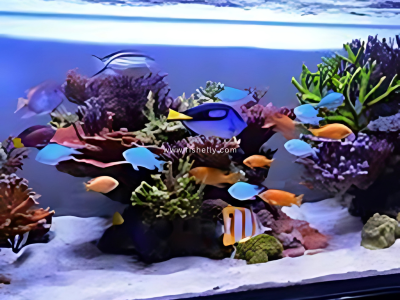
Biological Requirement: Facilitating photosynthesis in symbiotic algae (zooxanthellae) within the coral tissue. Without proper lighting, corals will deteriorate, lose their color, and eventually perish.

In contrast to freshwater tanks, which can be supported by lower-intensity lighting for plant development, saltwater tanks need specialized light spectrums and intensities to sustain the more sophisticated biological processes of marine life.
Saltwater vs. Freshwater Aquarium Lighting Differences
Let's summarize the main differences:
1. Spectrum Needs
Freshwater Plants: Thrive under lighting that focuses on red and blue wavelengths, usually around 6,500K–7,000K.
Saltwater Corals: Need full-spectrum lighting with a strong blue and actinic range (420–460 nm). This spectrum travels deeper in the water and stimulates photosynthesis in zooxanthellae.
2. Light Intensity (PAR)
• PAR (Photosynthetically Active Radiation) is essential in reef tanks. Corals—particularly SPS (Small Polyp Stony) corals—require high levels of PAR in order to grow and flourish.
• Most freshwater aquatic plants require less PAR, and excessive lighting will actually stimulate nuisance algae.

3. Photoperiod
• Reef tanks usually mimic a natural day-night cycle, such as dawn, midday peak, and sunset, with programmable lights. This is essential for coral health and minimizes stress in marine animals.
• Freshwater setups usually have a straightforward on/off cycle of 8–10 hours.
Types of Lighting for Saltwater Tanks
There are various lighting options for saltwater tanks, each with its own advantages and disadvantages based on your tank configuration.
1. LED Lighting (Most Popular Today)
Pros: Energy-efficient, customizable spectrum, low heat output, long lifespan.
Best For: All saltwater setups, from fish-only to high-end SPS reef tanks.
Popular Brands: Ecotech Radion, AI Prime, Kessil, Red Sea ReefLED.
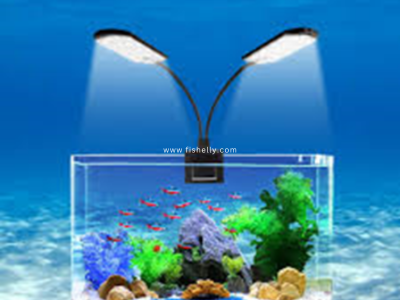
2. T5 High Output (HO) Fluorescents
Pros: Broad, even light distribution; proven growth for many coral types.
Best For: LPS/soft coral tanks or as supplemental light in hybrid setups.
Cons: Bulbs need replacement every 9–12 months; more power consumption than LEDs.
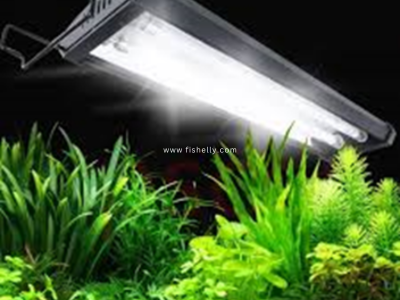
3. Metal Halide Lighting
Pros: Strong light with deep penetration—perfect for large and deep reef tanks.
Best For: Experienced reef keepers with high-maintenance SPS corals.
Cons: Produces a lot of heat, needs chiller, consumes more electricity.

Selecting the Right Light Depending on Tank Type
Here's a summary depending on what you have in your saltwater tank:
• Fish-Only (FOWLR): Simple LED or fluorescent. No requirement for special spectrum or high intensity.

• Soft Coral Reef Tank: Average to strong LED or T5 HO lighting with limited blue/actinic wavelengths.

• LPS Coral Reef Tank: Mid-to-high PAR LED or hybrid LED + T5 configurations with optimal spectrum coverage.
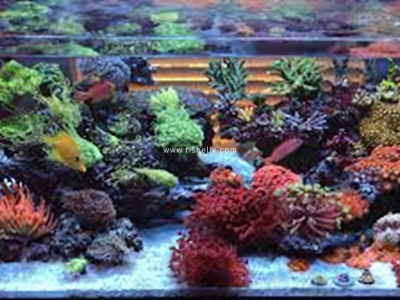
• SPS Coral Reef Tank: High PAR output, adjustable spectrum, preferably high-end LED or metal halide.
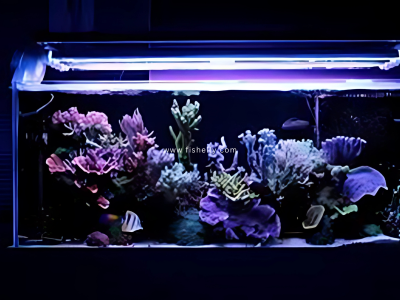
• Mixed Reef Tank: Adjustable, full-spectrum LED lighting to accommodate all types of corals.

Lighting Schedule: Simulating Nature
In nature, marine habitats have a predictable lighting cycle. Reef tank lighting should replicate this:
• Sunrise (Ramp-Up Light): Soft blue light (1–2 hours)
• Midday (Peak Intensity): Blue and full-spectrum light (6–8 hours)
• Sunset (Ramp-Down): Dimming intensity, back to blue (1–2 hours)
• Night Mode: Optional moonlight (low blue) for aesthetics and observation of nocturnal behavior.
Most contemporary LED equipment provides automated ramping and timer functions that duplicate this natural sequence.
Common Mistakes in Saltwater Aquarium Lighting
• Applying Freshwater Fixtures to Marine Tanks: They do not have the proper spectrum and intensity.
• Overlighting: Excessive light can bleach corals and promote excessive algae.
• Under-lighting Reef Tanks: Produces unhealthy corals, stunted growth, and pale coloration.
• Failure to Replace Old Bulbs: Fluorescent and halide bulbs deteriorate with time even when still illuminated.
Faq
1. Do saltwater aquariums need special lighting?
Yes, saltwater tanks—especially reef tanks—require specific lighting that supports coral health and photosynthesis, unlike freshwater tanks which can use simpler lighting.
2. What’s the difference between saltwater and freshwater aquarium lighting?
Saltwater tanks need stronger light intensity (PAR) and specific spectrum ranges like blue and actinic light, while freshwater plants thrive under red and blue light around 6,500K.
3. Why is lighting so important in reef tanks?
Lighting supports photosynthesis in zooxanthellae, the symbiotic algae living in coral. Without it, corals can lose color, stop growing, and eventually die.
4. Can I use regular aquarium lights for my saltwater tank?
Not recommended. Freshwater lights usually lack the correct spectrum and intensity needed for marine life, especially corals.
5. What kind of light is best for a saltwater tank with only fish?
A basic LED or fluorescent light works fine if you’re not keeping corals—just enough to see your fish clearly.
6. Which light is best for corals in a saltwater tank?
For soft and LPS corals, LED or T5 HO lighting is great. For SPS corals, go for high-PAR LED or metal halide lighting with adjustable spectrums.
7. What does PAR mean in reef lighting?
PAR stands for Photosynthetically Active Radiation. It's the part of light spectrum corals use for photosynthesis. Higher PAR is needed for SPS corals.
8. How long should I keep my reef tank lights on each day?
Aim for a natural cycle: 1–2 hours ramp-up (sunrise), 6–8 hours peak (midday), 1–2 hours ramp-down (sunset), and optional moonlight at night.
9. Can too much light harm my corals?
Yes, overlighting can bleach corals and promote algae growth. It's important to match light intensity to the coral type.
10. Do I need to replace bulbs in my aquarium lights?
Yes, especially if you're using T5 or metal halides. Even if they still light up, their spectrum and intensity fade over time.
11. Is LED lighting good for saltwater tanks?
Absolutely. Modern LEDs are energy-efficient, customizable, and perfect for all types of saltwater tanks, from fish-only to advanced reefs.
12. What happens if I don’t give enough light to my corals?
They may stop growing, lose their vibrant color, and eventually die due to lack of photosynthesis.
13. What’s the ideal spectrum for reef tanks?
A strong blue/actinic range (420–460 nm) is essential for coral photosynthesis and color enhancement.
Conclusion
Yes, saltwater tanks require a different type of light—one that's more intense, spectrum-specific, and sometimes programmable to mimic natural lighting conditions. The requirements of a saltwater tank extend far beyond aesthetics; they have a direct impact on the health of your marine ecosystem. If you're having a fish-only tank, standard lighting may be all you need. But if you're venturing into coral and reef territory, spending money on good lighting is not something you can avoid—it's something you must do.Lighting is life in a saltwater aquarium. Pick carefully, and your underwater universe will flourish.






